Tattoos of the Early Haida
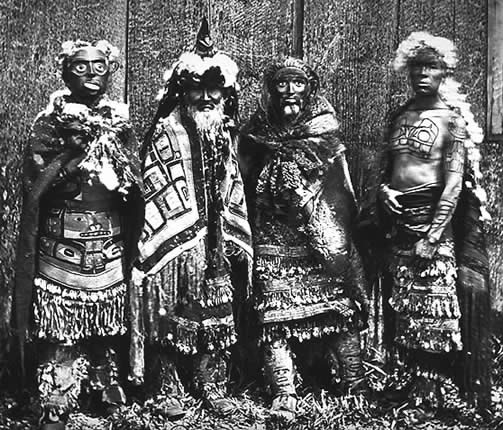
Dr. Kudé (second from left) and other shaman of Masset pose for a photograph. Kudé wears the Chilkat blanket of a chief, a title that he had claim to, rather than the dance apron of a shaman. The figure on the left wearing the mask with a crooked mouth represents the wife of one of the other masked figures who was supposed to be dead; Dr. Kudé has just restored him to life. The man on the right is Chief Xa'na of Grizzly Bear House with tattooed hereditary crests, Masset, B.C., 1881. Xa'na has a grizzly bear tattoo on his chest, a seated bear on his shoulder, and possibly a killer whale on his forearm. This is the only known photo of Haida shaman wearing masks.
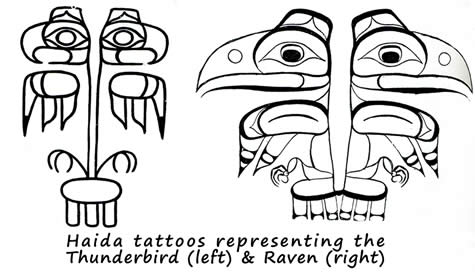
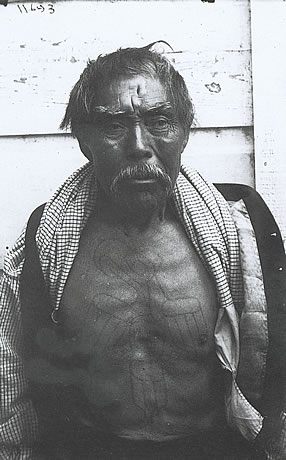
Haida man
with Thunderbird crest tattooed on his chest
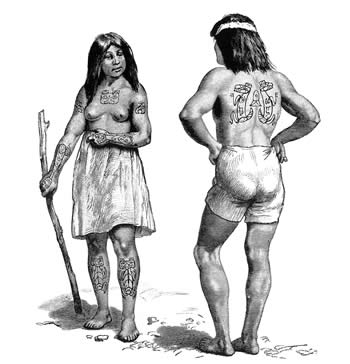
Haida couple with crest tattoos. After Swan (1886). Haida woman with bear's head tattooed on breast, each shoulder adorned with head of an eagle. On her arms
& legs are figures of the bear. Haida man with wolf spirit tattooed on back.
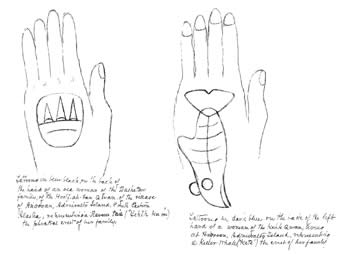
Tlingit women's hand tattoos drawn by George T. Emmons at Angoon, Alaska, 1889. Emmon's journal notes for these drawings read (from left to right):
"Tattooing in blue black, on the back of the hand of an old woman of the Dashetan family, of the Hootz-ah-tah Qwan, of the village of Angooan,
Admiralty Island, representing a Raven's tail ("Yehlh ku-ou") the phratal
crest of her family." "Tattooing in dark blue on the back of the left hand of a woman of the Kehk Qwan, living at Angooan, Admiralty Island, representing a killerwhale
("Kete") the crest of her family."
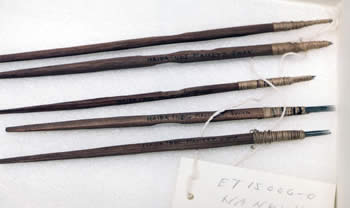
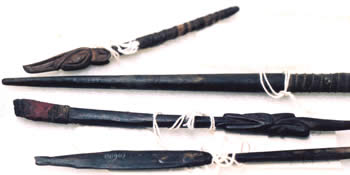
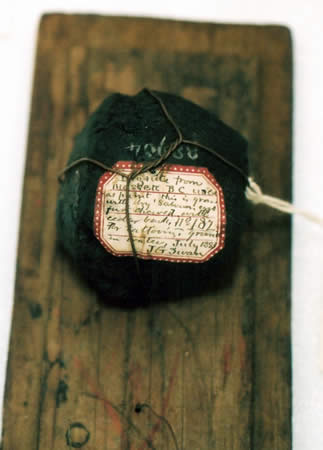
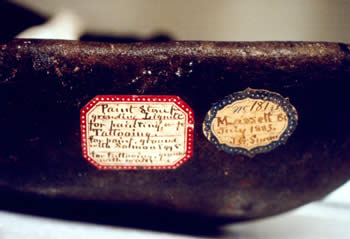
Haida tattoo kit collected by James G. Swan at Massett, British
Columbia, July 1883. Photographs © Lars Krutak 2002. This Haida
hand-poking kit consists of five cedar batons, a lump of
magnetite for pigment, a stone dish to mix the tattoo pigment,
and a set of carved cedar brushes - some still impregnated with
pigment - adorned with crest symbols. I have searched other
museum collections for similar examples and have found none.
Thus, this assemblage of tools seems to represent one of the
last, if not the only, authentic Haida tattoo kits remaining in
the world. Today, it is housed at the Smithsonian Institution's
National Museum of Natural History.
<< BACK
NEXT >>
Arctic & Alaska
